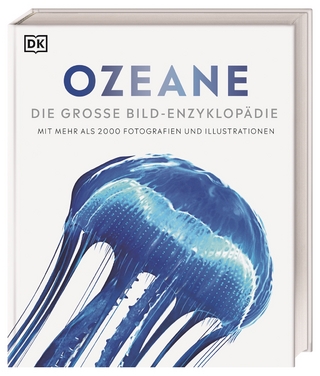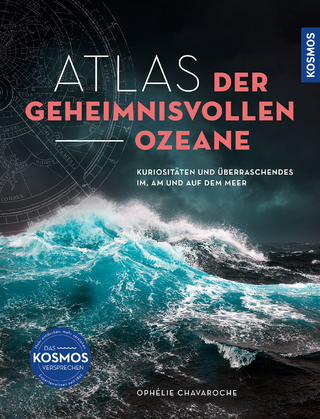
Ecohydraulics
Wiley-Blackwell (Verlag)
978-0-470-97600-5 (ISBN)
- Titel z.Zt. nicht lieferbar
- Versandkostenfrei innerhalb Deutschlands
- Auch auf Rechnung
- Verfügbarkeit in der Filiale vor Ort prüfen
- Artikel merken
Ecohydraulics: An Integrated Approachprovides a research level text which highlights recent developments of this emerging and expanding field. With a focus on interdisciplinary research the text examines:-
the evolution and scope of ecohydraulics
interactions between hydraulics, hydrology, fluvial geomorphology and aquatic ecology
the application of habitat modelling in ecohydraulic studies
state of the art methodological developments and approaches
detailed case studies including fish passage design and the management of environmental flow regimes
research needs and the future of ecohydraulics research
The contributions offer broad geographic coverage to encapsulate the wide range of approaches, case studies and methods used to conduct ecohydraulics research. The book considers a range of spatial and temporal scales of relevance and aquatic organisms ranging from algae and macrophytes to macroinvertebrates and fish. River management and restoration are also considered in detail, making this volume of direct relevance to those concerned with cutting edge research and its application for water resource management.
Aimed at academics and postgraduate researchers in departments of physical geography, earth sciences, environmental science, environmental management, civil engineering, biology, zoology, botany and ecology; Ecohydraulics: An Integrated Approach will be of direct relevance to academics, researchers and professionals working in environmental research organisations, national agencies and consultancies.
EDITORS IAN MADDOCK, Institute of Science and the Environment, University of Worcester, UK ATLE HARBY, SINTEF Energy Research, Trondheim, Norway PAUL KEMP, International Centre for Ecohydraulics Research, University of Southampton, UK PAUL WOOD, Department of Geography, Loughborough University, Leicestershire, UK AN INTEGRATED APPROACH
List of Contributors, xi 1 Ecohydraulics: An Introduction, 1
Ian Maddock, Atle Harby, Paul Kemp and Paul Wood
1.1 Introduction, 1
1.2 The emergence of ecohydraulics, 2
1.3 Scope and organisation of this book, 4
References, 4
Part I Methods and Approaches
2 Incorporating Hydrodynamics into Ecohydraulics: The Role of Turbulence in the Swimming Performance and Habitat Selection of Stream-Dwelling Fish, 9
Martin A. Wilkes, Ian Maddock, Fleur Visser and Michael C. Acreman
2.1 Introduction, 9
2.2 Turbulence: theory, structure and measurement, 11
2.3 The role of turbulence in the swimming performance and habitat selection of river-dwelling fish, 20
2.4 Conclusions, 24
Acknowledgements, 25
References, 25
3 Hydraulic Modelling Approaches for Ecohydraulic Studies: 3D, 2D, 1D and Non-Numerical Models, 31
Daniele Tonina and Klaus Jorde
3.1 Introduction, 31
3.2 Types of hydraulic modelling, 32
3.3 Elements of numerical hydrodynamic modelling, 33
3.4 3D modelling, 49
3.5 2D models, 55
3.6 1D models, 57
3.7 River floodplain interaction, 59
3.8 Non-numerical hydraulic modelling, 60
3.9 Case studies, 60
3.10 Conclusions, 64
Acknowledgements, 66
References, 66
4 The Habitat Modelling System CASiMiR: A Multivariate Fuzzy Approach and its Applications, 75
Markus Noack, Matthias Schneider and Silke Wieprecht
4.1 Introduction, 75
4.2 Theoretical basics of the habitat simulation tool CASiMiR, 76
4.3 Comparison of habitat modelling using the multivariate fuzzy approach and univariate preference functions, 80
4.4 Simulation of spawning habitats considering morphodynamic processes, 82
4.5 Habitat modelling on meso- to basin-scale, 85
4.6 Discussion and conclusions, 87
References, 89
5 Data-Driven Fuzzy Habitat Models: Impact of Performance Criteria and Opportunities for Ecohydraulics, 93
Ans Mouton, Bernard De Baets and Peter Goethals
5.1 Challenges for species distribution models, 93
5.2 Fuzzy modelling, 95
5.3 Case study, 100
References, 105
6 Applications of the MesoHABSIM Simulation Model, 109
Piotr Parasiewicz, Joseph N. Rogers, Paolo Vezza, Javier Gort´azar, Thomas Seager, Mark Pegg, Wies©©aw Wi´sniewolski and Claudio Comoglio
6.1 Introduction, 109
6.2 Model summary, 109
Acknowledgements, 123
References, 123
7 The Role of Geomorphology and Hydrology in Determining Spatial-Scale Units for Ecohydraulics, 125
Elisa Zavadil and Michael Stewardson
7.1 Introduction, 125
7.2 Continuum and dis-continuum views of stream networks, 126
7.3 Evolution of the geomorphic scale hierarchy, 127
7.4 Defining scale units, 131
7.5 Advancing the scale hierarchy: future research priorities, 139
References, 139
8 Developing Realistic Fish Passage Criteria: An Ecohydraulics Approach, 143
Andrew S. Vowles, Lynda R. Eakins, Adam T. Piper, James R. Kerr and Paul Kemp
8.1 Introduction, 143
8.2 Developing fish passage criteria, 144
8.3 Conclusions, 151
8.4 Future challenges, 152
References, 152
Part II Species–Habitat Interactions
9 Habitat Use and Selection by Brown Trout in Streams, 159
Jan Heggenes and Jens Wollebæk
9.1 Introduction, 159
9.2 Observation methods and bias, 160
9.3 Habitat, 161
9.4 Abiotic and biotic factors, 161
9.5 Key hydraulic factors, 163
9.6 Habitat selection, 163
9.7 Temporal variability: light and flows, 166
9.8 Energetic and biomass models, 168
9.9 The hyporheic zone, 169
9.10 Spatial and temporal complexity of redd microhabitat, 169
9.11 Summary and ways forward, 170
References, 170
10 Salmonid Habitats in Riverine Winter Conditions with Ice, 177
Ari Huusko, Teppo Vehanen and Morten Stickler
10.1 Introduction, 177
10.2 Ice processes in running waters, 178
10.3 Salmonids in winter ice conditions, 182
10.4 Summary and ways forward, 186
References, 188
11 Stream Habitat Associations of the Foothill Yellow-Legged Frog (Rana boylii): The Importance of Habitat Heterogeneity, 193
Sarah Yarnell
11.1 Introduction, 193
11.2 Methods for quantifying stream habitat, 194
11.3 Observed relationships between R. boylii and stream habitat, 198
11.4 Discussion, 204
References, 209
12 Testing the Relationship Between Surface Flow Types and Benthic Macroinvertebrates, 213
Graham Hill, Ian Maddock and Melanie Bickerton
12.1 Background, 213
12.2 Ecohydraulic relationships between habitat and biota, 213
12.3 Case study, 216
12.4 Discussion, 223
12.5 Wider implications, 226
12.6 Conclusion, 227
References, 227
13 The Impact of Altered Flow Regime on Periphyton, 229
Natas¢§a Smolar-Z¢§vanut and Aleksandra Krivograd Klemenc¢§ic¢§
13.1 Introduction, 229
13.2 Modified flow regimes, 230
13.3 The impact of altered flow regime on periphyton, 231
13.4 Case studies from Slovenia, 236
13.5 Conclusions, 240
References, 240
14 Ecohydraulics and Aquatic Macrophytes: Assessing the Relationship in River Floodplains, 245
Georg A. Janauer, Udo Schmidt-Mumm and Walter Reckendorfer
14.1 Introduction, 245
14.2 Macrophytes, 246
14.3 Life forms of macrophytes in running waters, 248
14.4 Application of ecohydraulics for management: a case study on the Danube River and its floodplain, 249
14.5 Conclusion, 255
Acknowledgements, 255
Appendix 14.A: Abbreviations used in Figure 14.5, including full plant names and authorities, 255
References, 256
15 Multi-Scale Macrophyte Responses to Hydrodynamic Stress and Disturbances: Adaptive Strategies and Biodiversity Patterns, 261
Sara Puijalon and Gudrun Bornette
15.1 Introduction, 261
15.2 Individual and patch-scale response to hydrodynamic stress and disturbances, 262
15.3 Community responses to temporary peaks of flow and current velocity, 266
15.4 Macrophyte abundance, biodiversity and succession, 268
15.5 Conclusion, 269
References, 270
Part III Management Application Case Studies
16 Application of Real-Time Management for Environmental Flow Regimes, 277
Thomas B. Hardy and Thomas A. Shaw
16.1 Introduction, 277
16.2 Real-time management, 278
16.3 The setting, 278
16.4 The context and challenges with present water allocation strategies, 281
16.5 The issues concerning the implementation of environmental flow regimes, 282
16.6 Underlying science for environmental flows in the Klamath River, 283
16.7 The Water Resource Integrated Modelling System for The Klamath Basin Restoration Agreement, 285
16.8 The solution – real-time management, 285
16.9 Example RTM implementation, 287
16.10 RTM performance, 287
16.11 Discussion, 290
16.12 Conclusions, 290
Acknowledgements, 291
References, 291
17 Hydraulic Modelling of Floodplain Vegetation in Korea: Development and Applications, 293
Hyoseop Woo and Sung-Uk Choi
17.1 Introduction, 293
17.2 Modelling of vegetated flows, 294
17.3 Floodplain vegetation modelling: From white rivers to green rivers, 300
17.4 Conclusions, 306
References, 306
18 A Historical Perspective on Downstream Passage at Hydroelectric Plants in Swedish Rivers, 309
Olle Calles, Peter Rivinoja and Larry Greenberg
18.1 Introduction, 309
18.2 Historical review of downstream bypass problems in Sweden, 310
18.3 Rehabilitating downstream passage in Swedish Rivers today, 312
18.4 Concluding remarks, 319
References, 320
19 Rapid Flow Fluctuations and Impacts on Fish and the Aquatic Ecosystem, 323
Atle Harby and Markus Noack
19.1 Introduction, 323
19.2 Rapid flow fluctuations, 325
19.3 Methods to study rapid flow fluctuations and their impact, 325
19.4 Results, 326
19.5 Mitigation, 329
19.6 Discussion and future work, 331
Acknowledgements, 333
References, 334
20 Ecohydraulic Design of Riffle-Pool Relief and Morphological Unit Geometry in Support of Regulated Gravel-Bed River Rehabilitation, 337
Gregory B. Pasternack and Rocko A. Brown
20.1 Introduction, 337
20.2 Experimental design, 338
20.3 Results, 347
20.4 Discussion and conclusions, 351
Acknowledgements, 353
References, 353
21 Ecohydraulics for River Management: Can Mesoscale Lotic Macroinvertebrate Data Inform Macroscale Ecosystem Assessment?, 357
Jessica M. Orlofske, Wendy A. Monk and Donald J. Baird
21.1 Introduction, 357
21.2 Lotic macroinvertebrates in a management context, 358
21.3 Patterns in lotic macroinvertebrate response to hydraulic variables, 359
21.4 Linking ecohydraulics and lotic macroinvertebrate traits, 365
21.5 Trait variation among lotic macroinvertebrates in LIFE flow groups, 366
21.6 Upscaling from ecohydraulics to management, 370
21.7 Conclusions, 371
References, 371
22 Estuarine Wetland Ecohydraulics and Migratory Shorebird Habitat Restoration, 375
Jos´e F. Rodr´©¥guez and Alice Howe
22.1 Introduction, 375
22.2 Area E of Kooragang Island, 377
22.3 Ecohydraulic and ecogeomorphic characterisation, 378
22.4 Modifying vegetation distribution by hydraulic manipulation, 382
22.5 Discussion, 388
22.6 Conclusions and recommendations, 390
References, 392
23 Ecohydraulics at the Landscape Scale: Applying the Concept of Temporal Landscape Continuity in River Restoration Using Cyclic Floodplain Rejuvenation, 395
Gertjan W. Geerling, Harm Duel, Anthonie D. Buijse and Antonius J.M. Smits
23.1 Introduction, 395
23.2 The inspiration: landscape dynamics of meandering rivers, 397
23.3 The concept: temporal continuity and discontinuity of landscapes along regulated rivers, 399
23.4 Application: floodplain restoration in a heavily regulated river, 401
23.5 The strategy in regulated rivers: cyclic floodplain rejuvenation (CFR), 403
23.6 General conclusions, 405
References, 405
24 Embodying Interactions Between Riparian Vegetation and Fluvial Hydraulic Processes Within a Dynamic Floodplain Model: Concepts and Applications, 407
Gregory Egger, Emilio Politti, Virginia Gar´ofano-G´omez, Bernadette Blamauer, Teresa Ferreira, Rui Rivaes, Rohan Benjankar and Helmut Habersack
24.1 Introduction, 407
24.2 Physical habitat and its effects on floodplain vegetation, 408
24.3 Succession phases and their environmental context, 410
24.4 Response of floodplain vegetation to fluvial processes, 414
24.5 Linking fluvial processes and vegetation: the disturbance regime approach as the backbone for the dynamic model, 415
24.6 Model applications, 417
24.7 Conclusion, 423
Acknowledgements, 424
References, 424
Part IV Conclusion
25 Research Needs, Challenges and the Future of Ecohydraulics Research, 431
Ian Maddock, Atle Harby, Paul Kemp and Paul Wood
25.1 Introduction, 431
25.2 Research needs and future challenges, 432
References, 435
Index, 437
| Erscheint lt. Verlag | 10.9.2013 |
|---|---|
| Verlagsort | Hoboken |
| Sprache | englisch |
| Maße | 196 x 254 mm |
| Gewicht | 980 g |
| Themenwelt | Naturwissenschaften ► Geowissenschaften ► Hydrologie / Ozeanografie |
| Technik ► Bauwesen | |
| ISBN-10 | 0-470-97600-4 / 0470976004 |
| ISBN-13 | 978-0-470-97600-5 / 9780470976005 |
| Zustand | Neuware |
| Haben Sie eine Frage zum Produkt? |
aus dem Bereich


